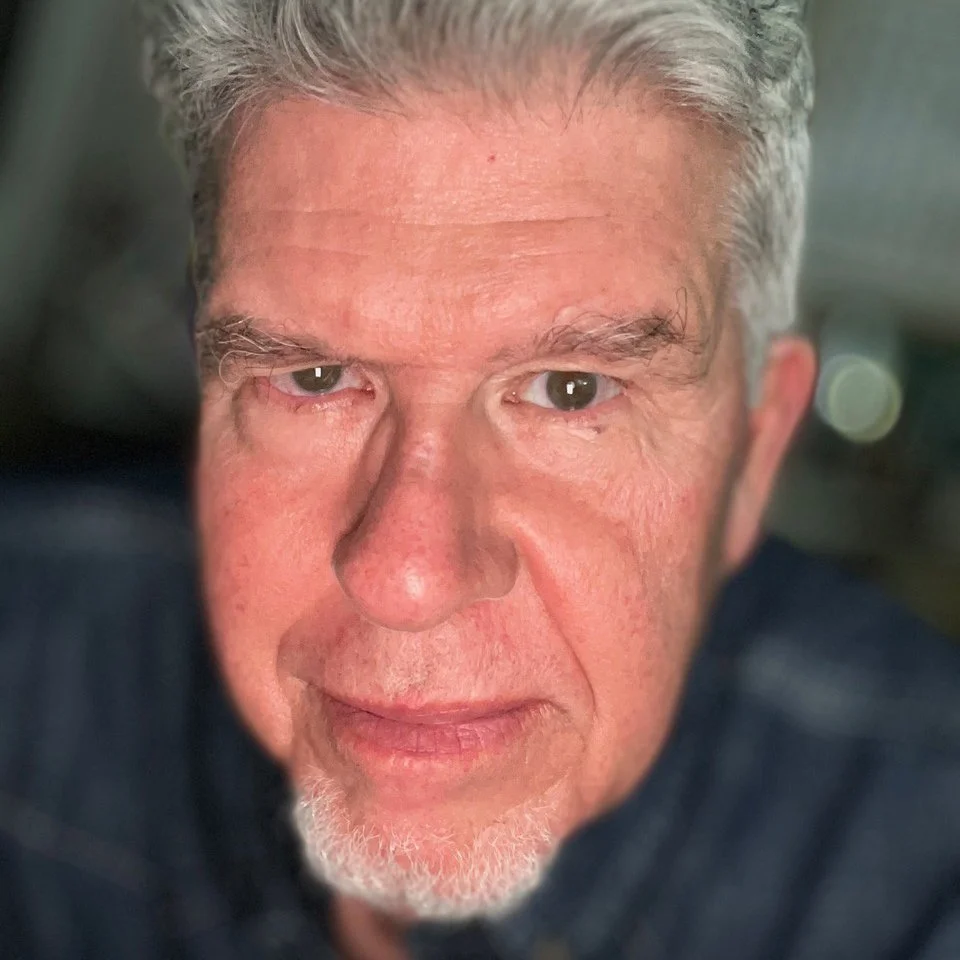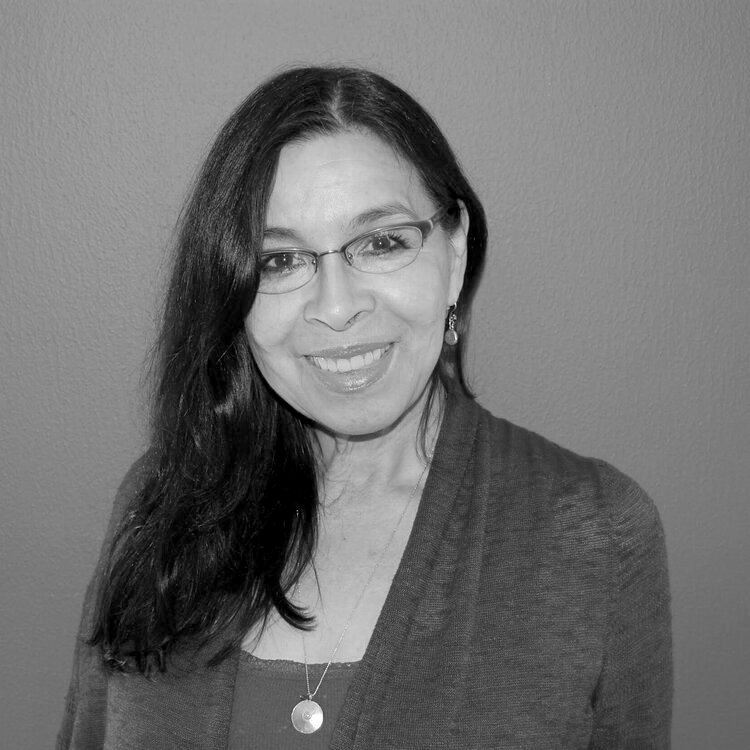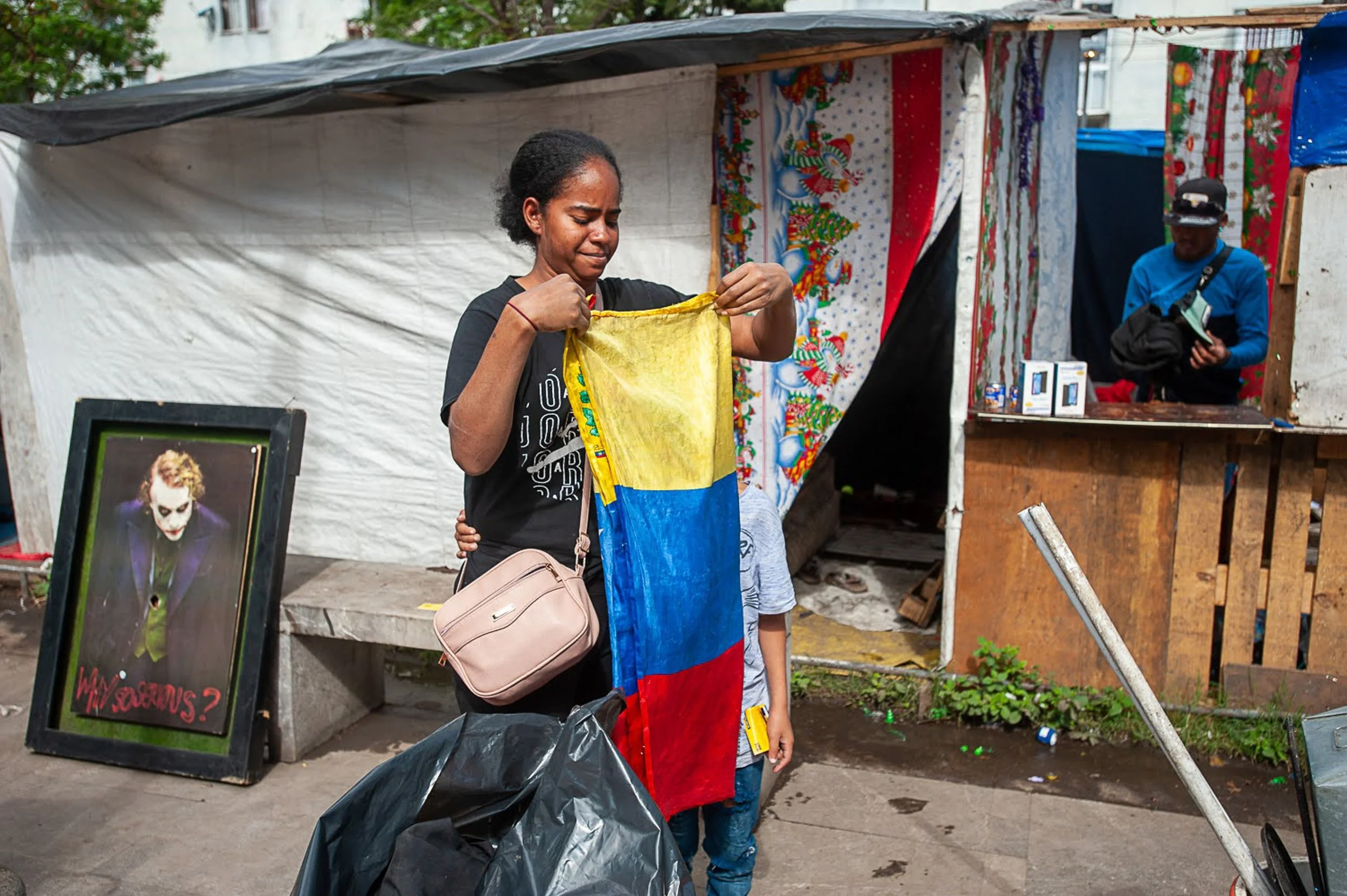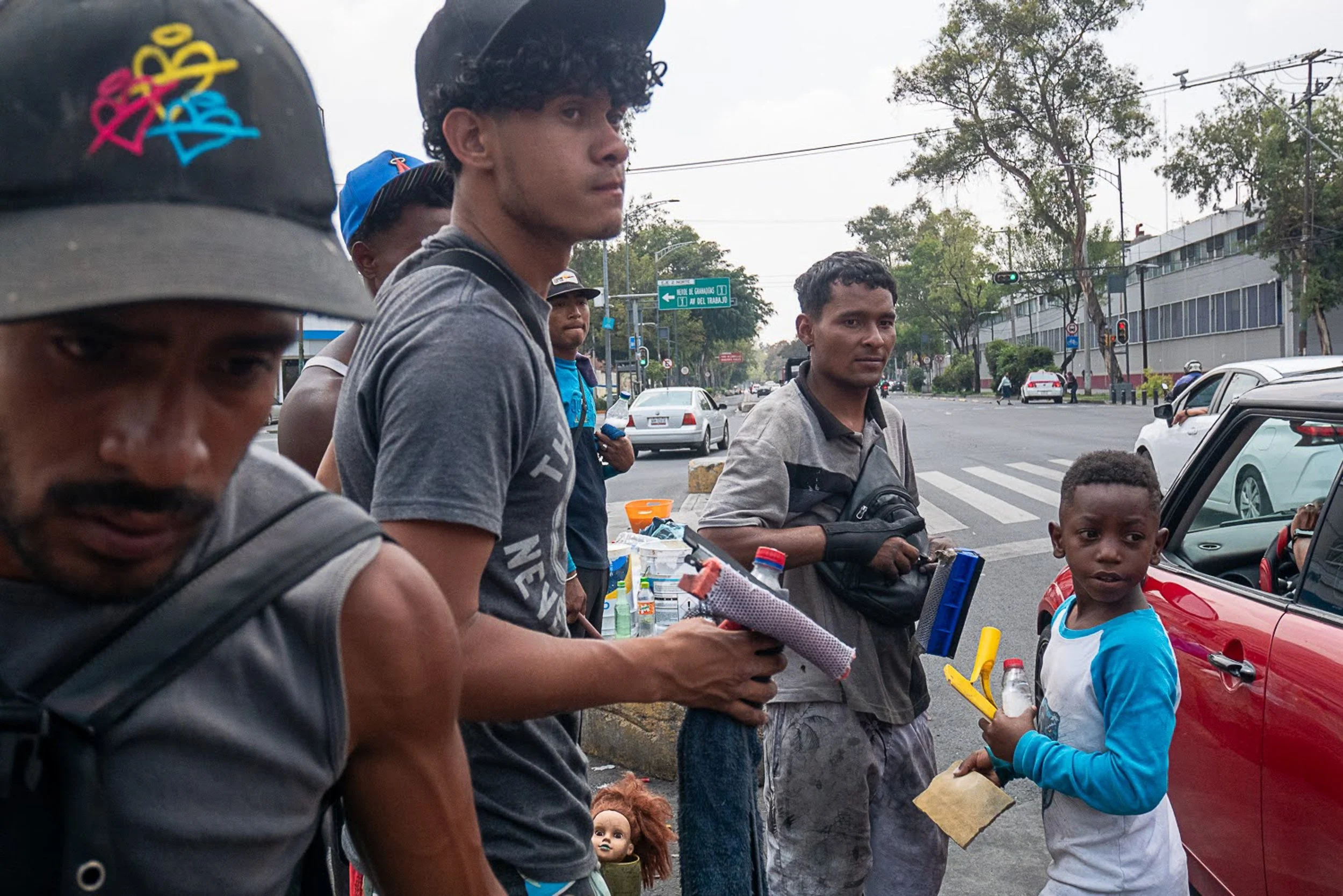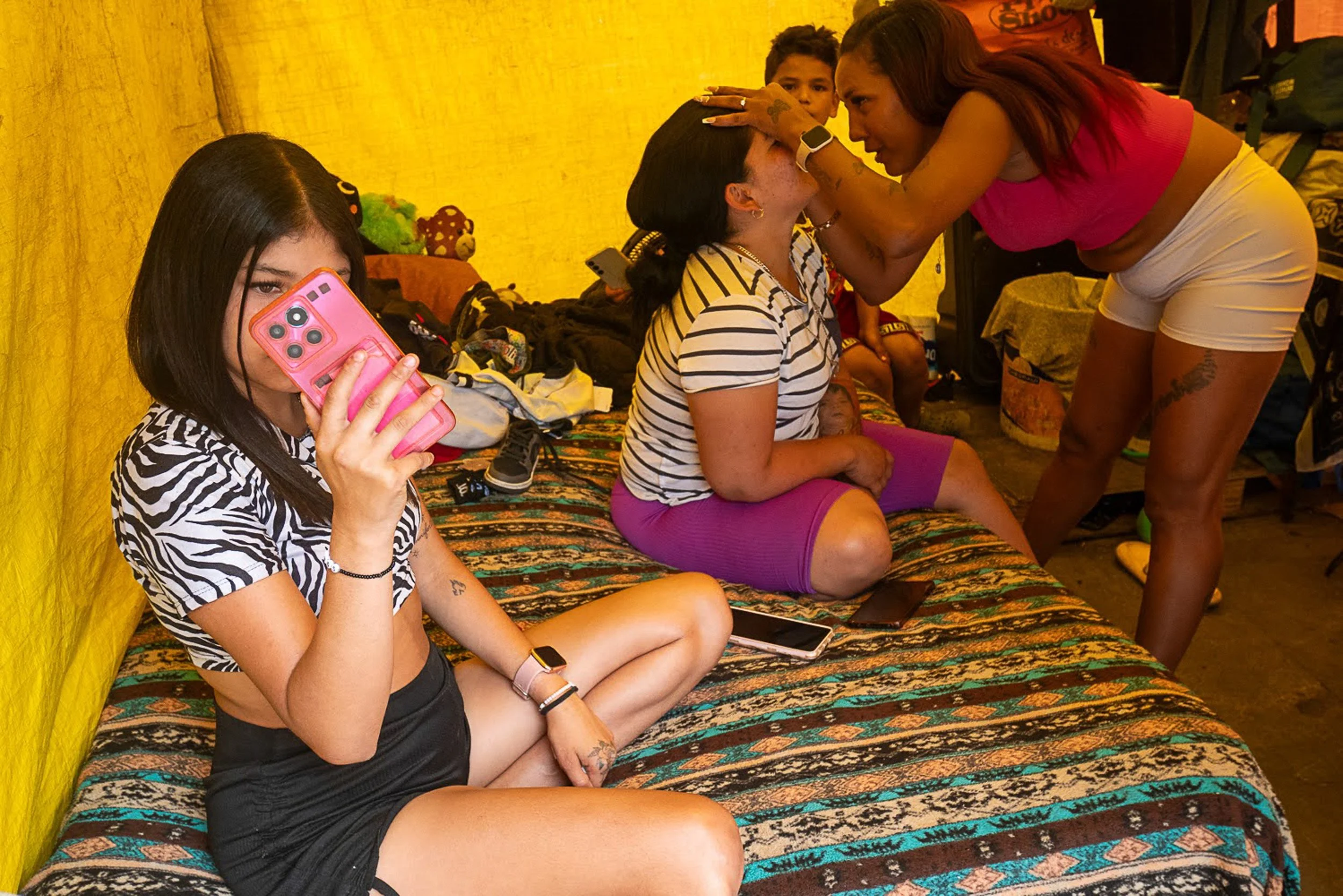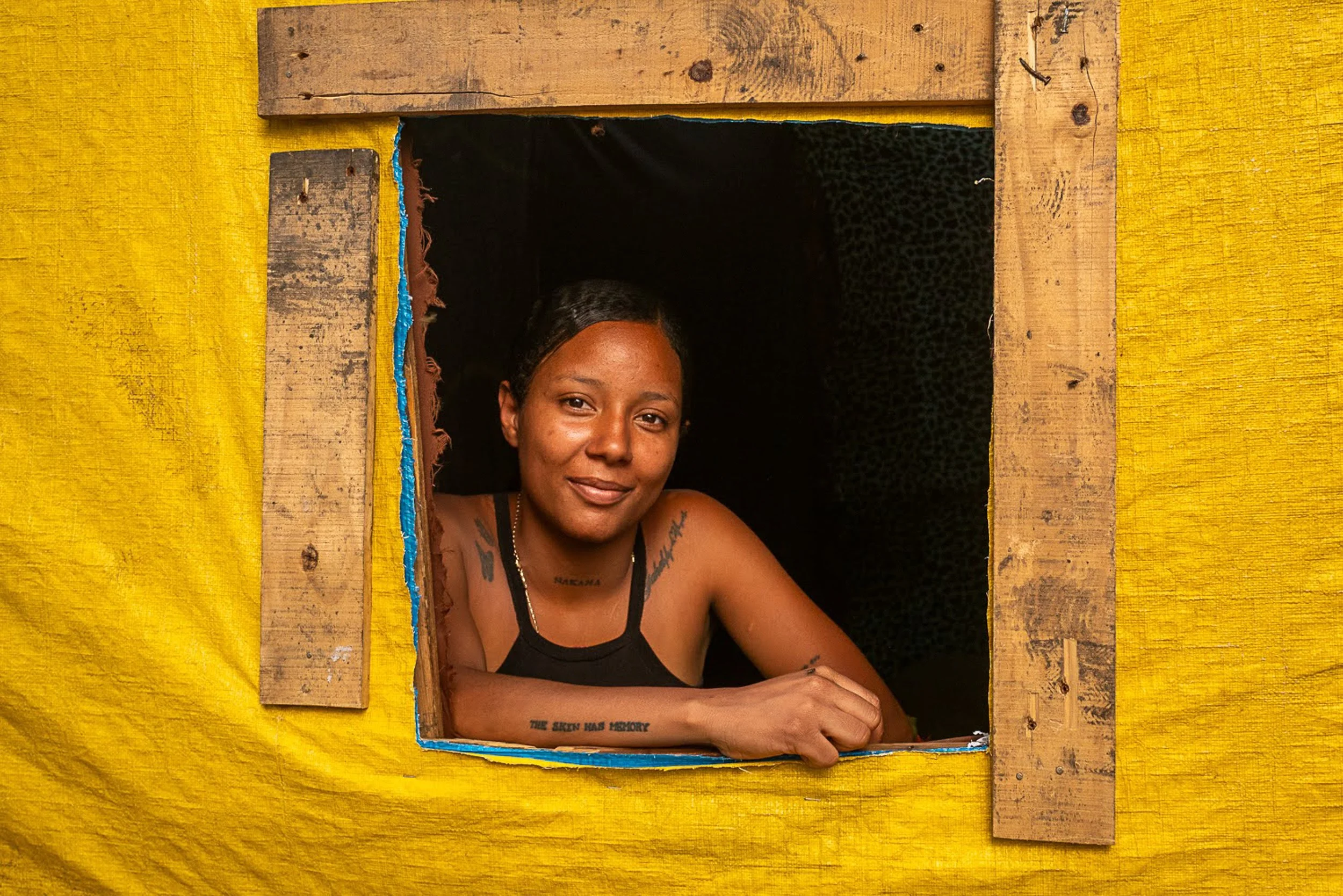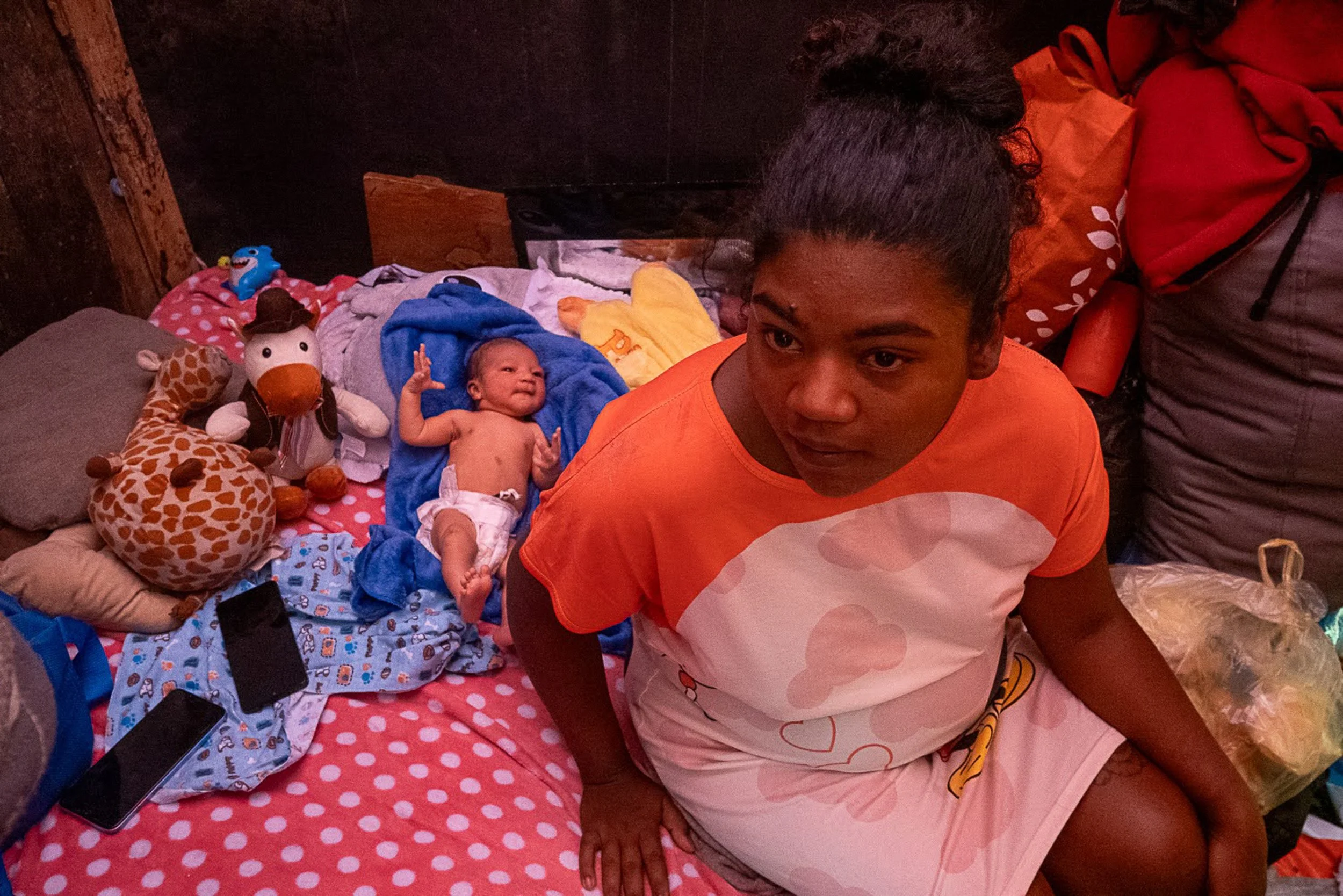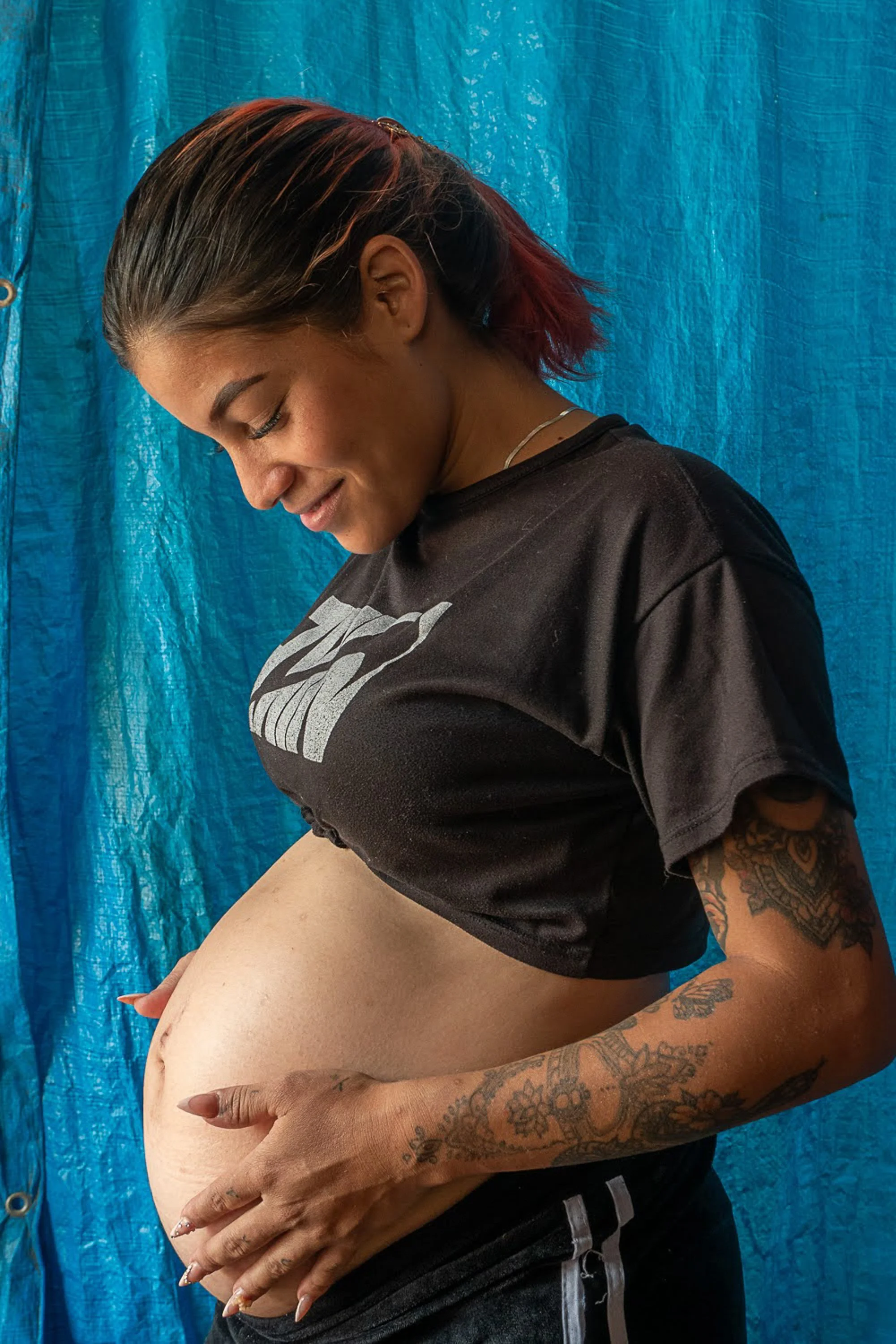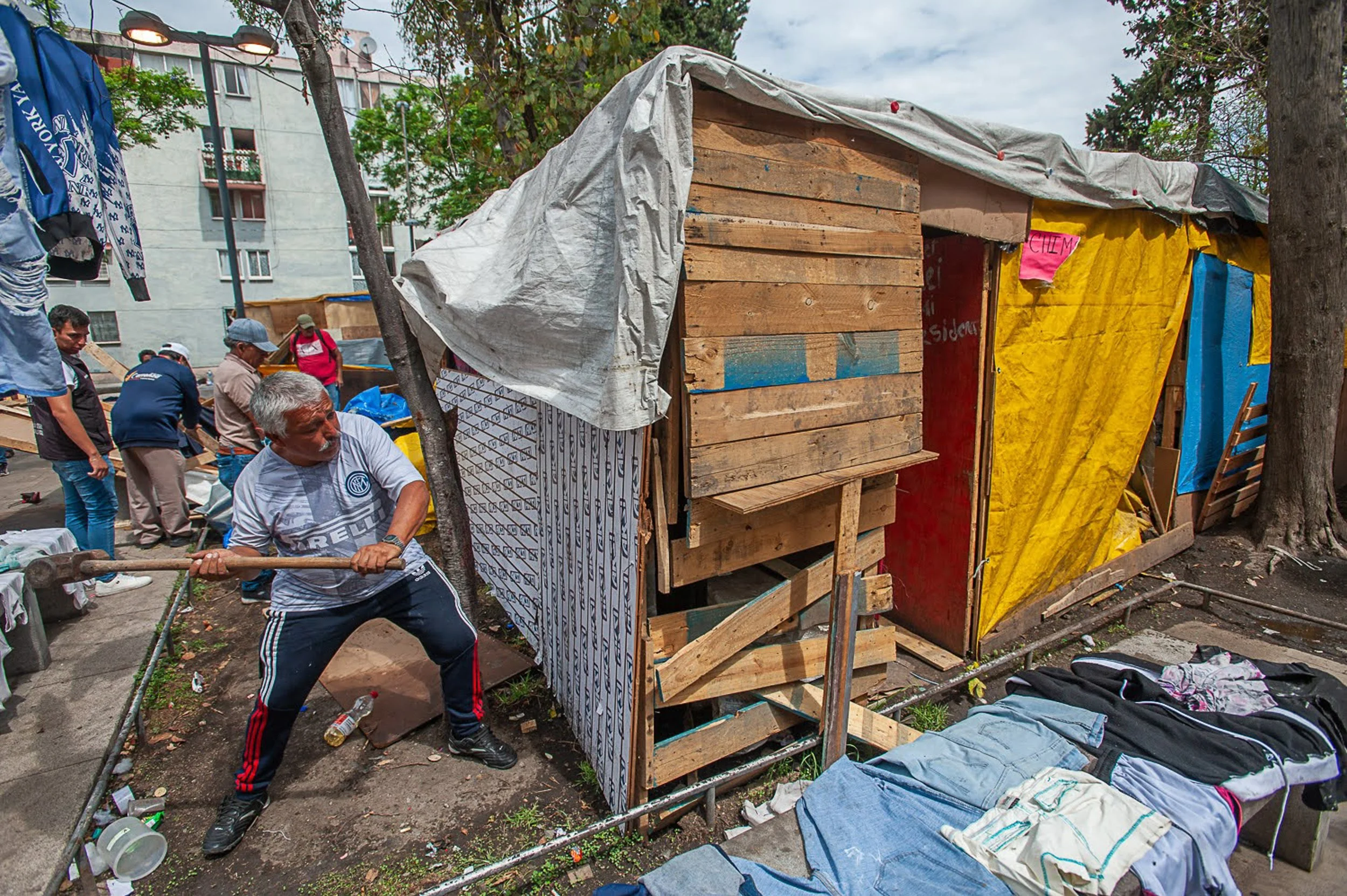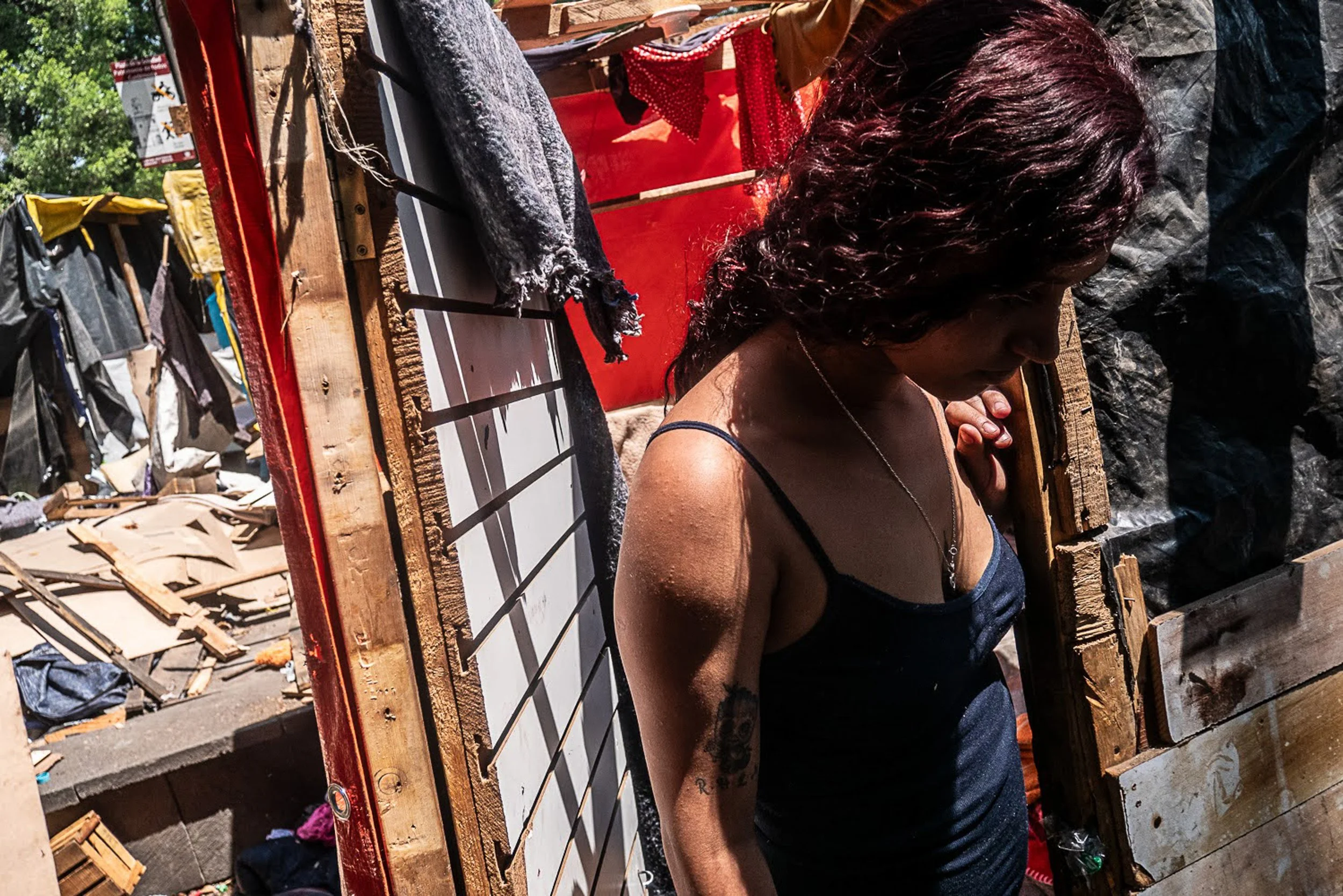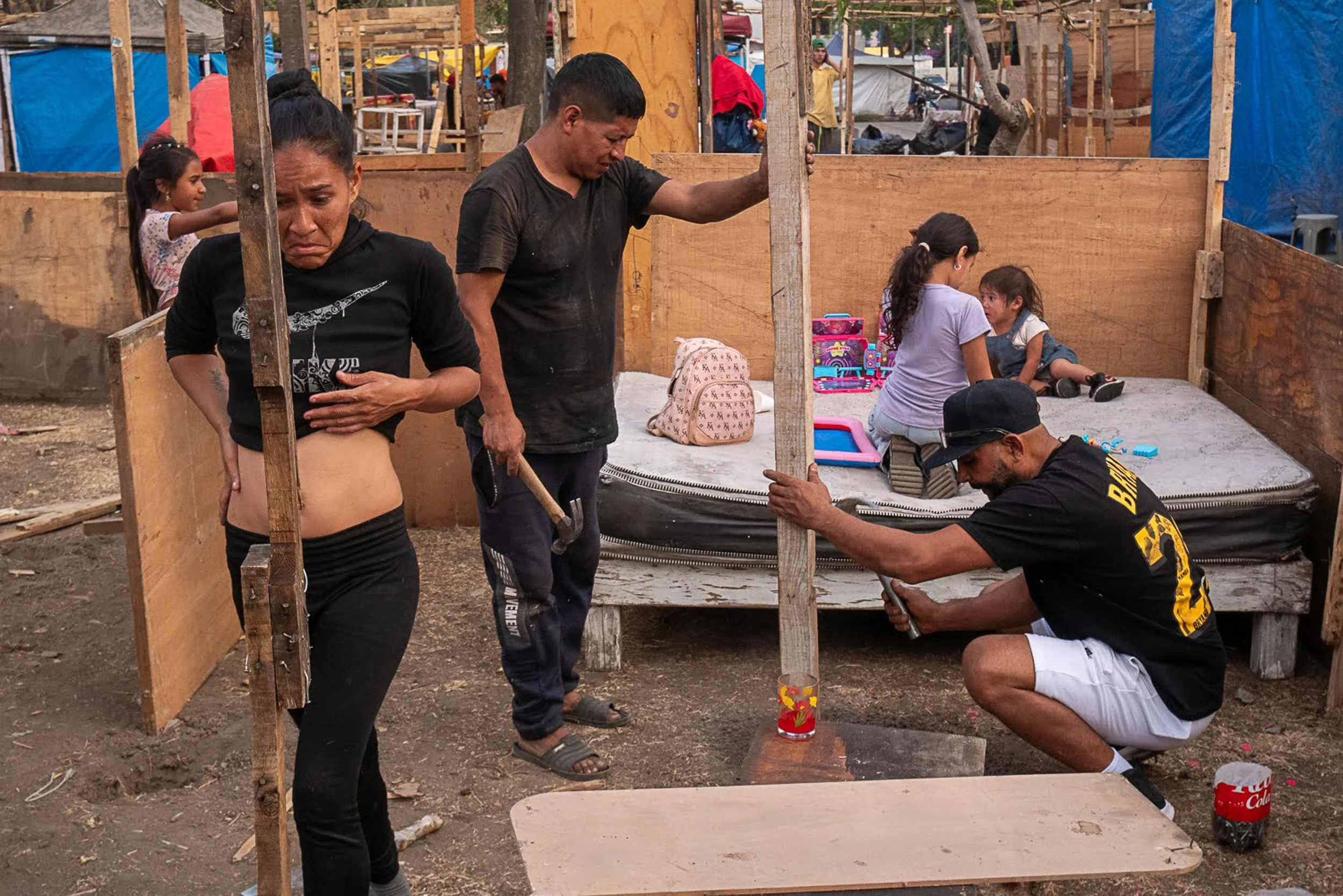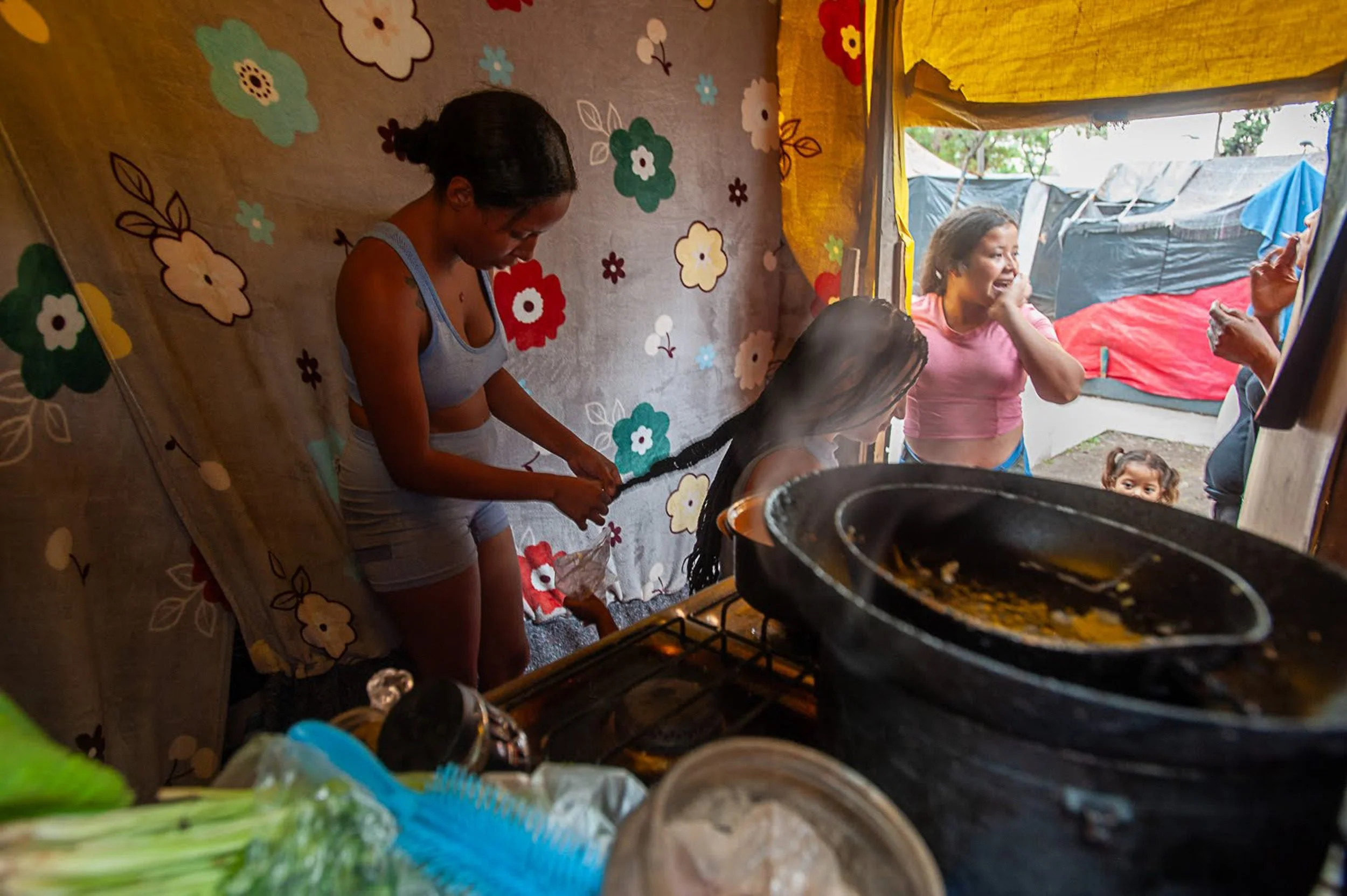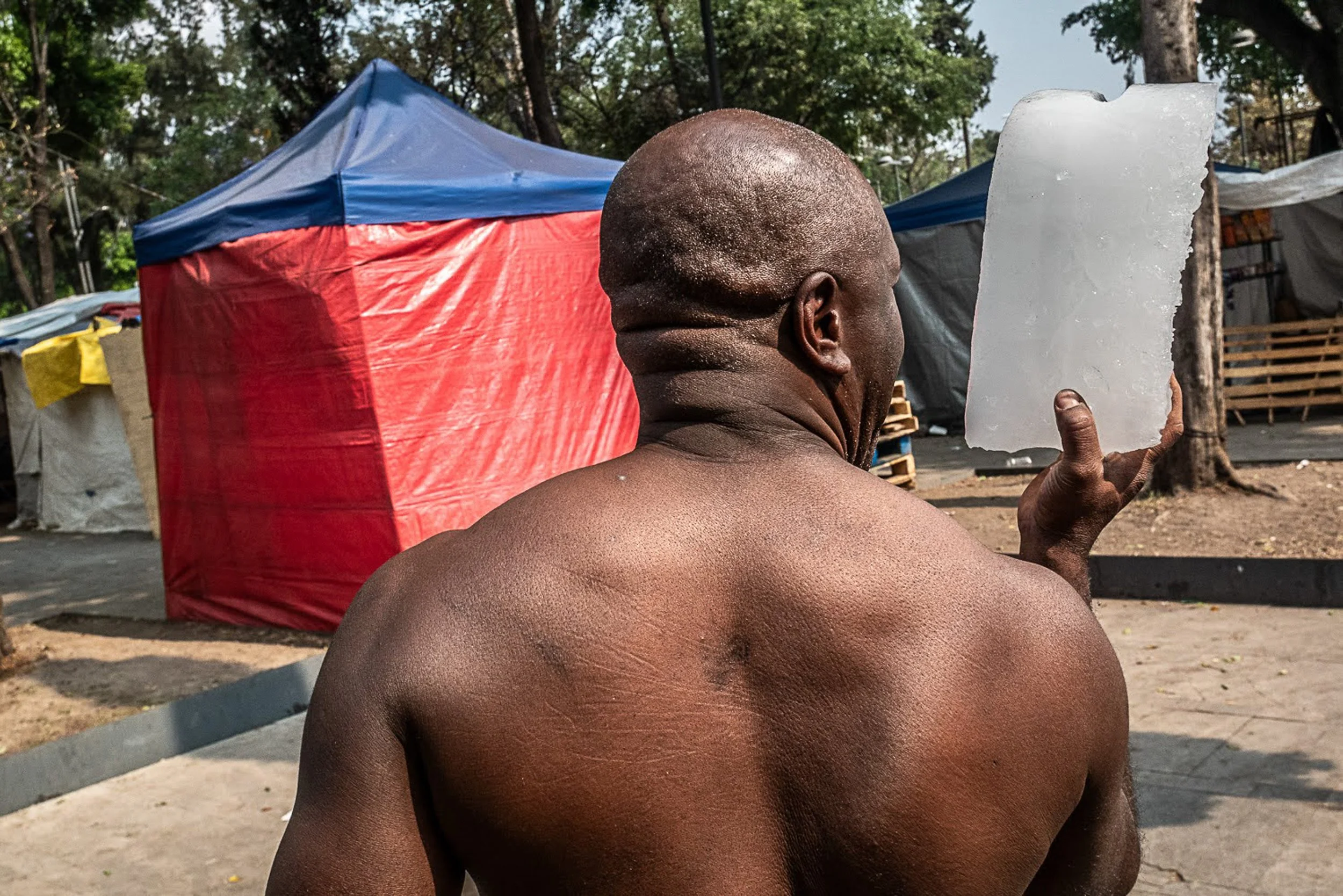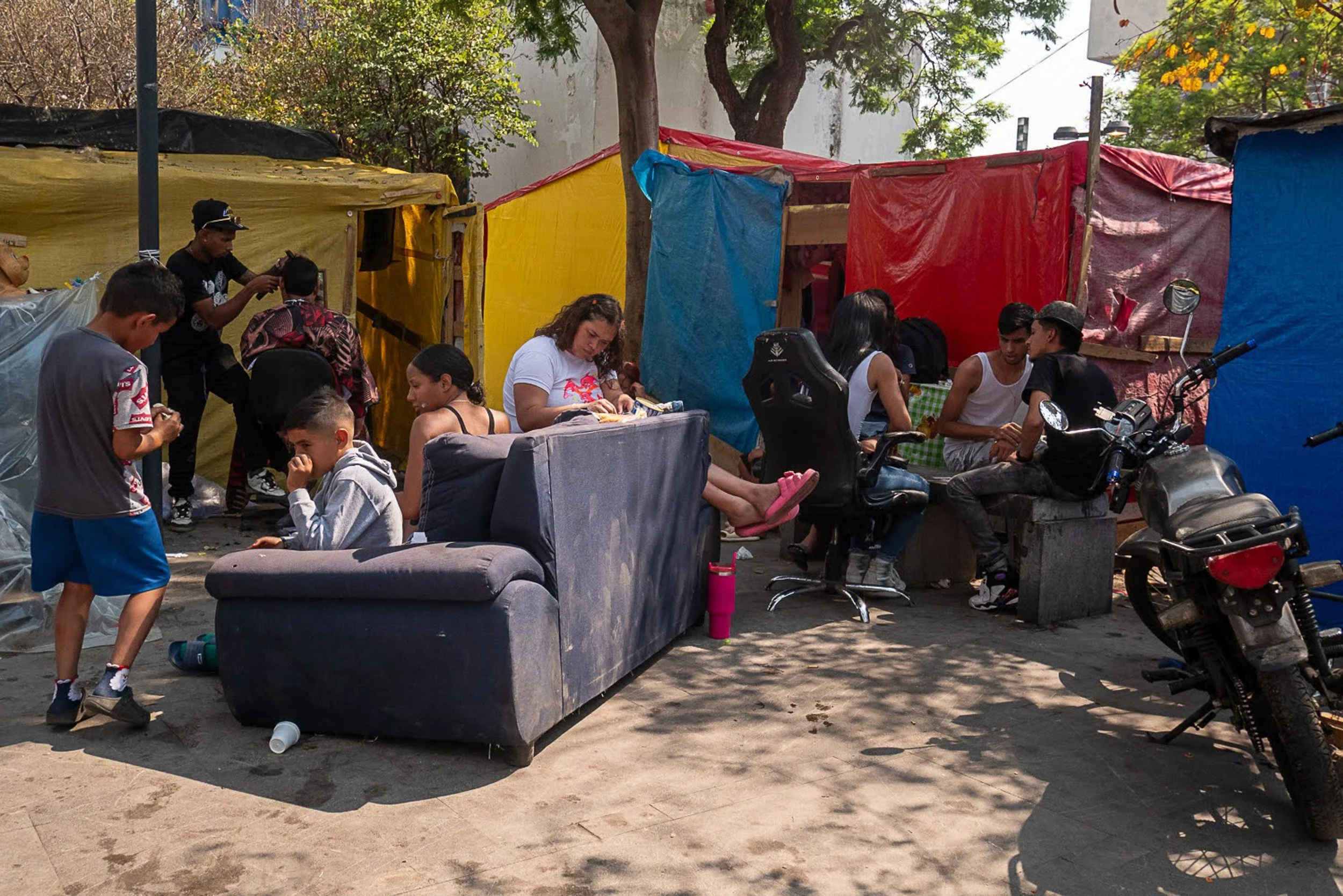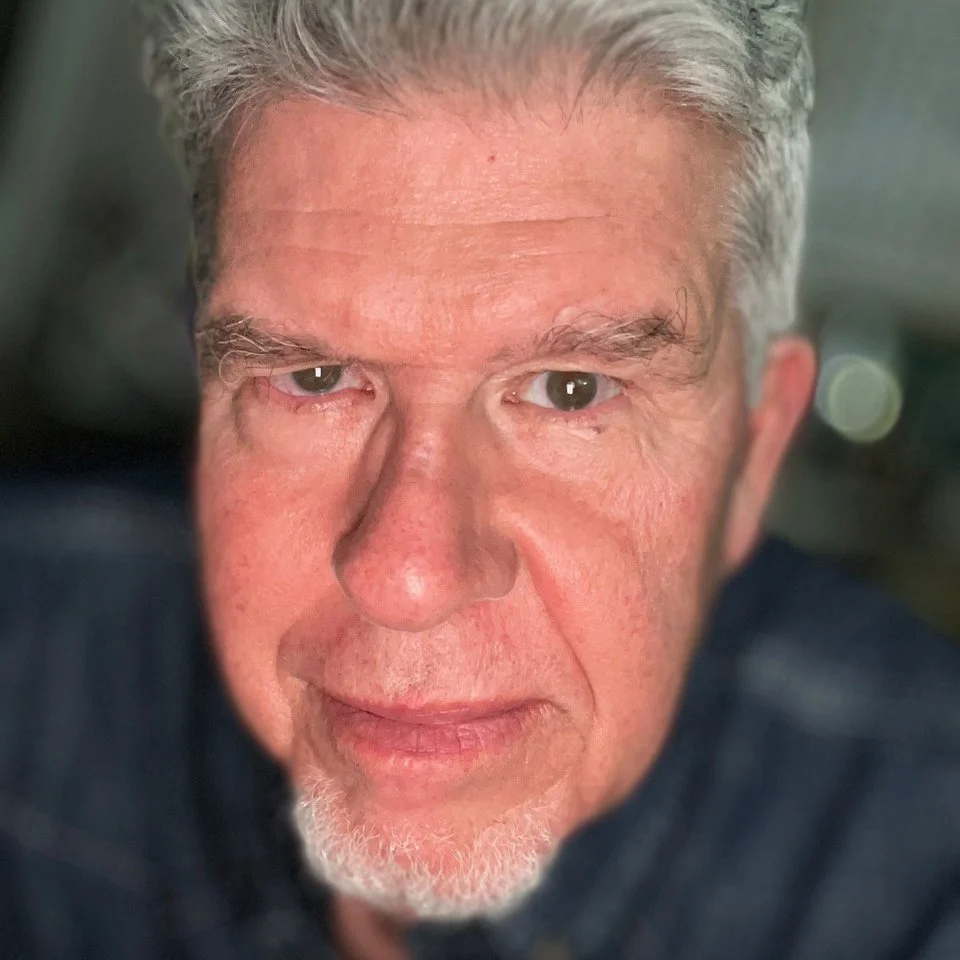MAROONED: Migrants stuck in Mexico City consider a journey reversal as passage north ebbs
Yuseiny, with her newborn daughter, Gabriela, rests in their one-room dwelling in the Plaza Guadalupe Victoria, commonly known as El Caballito for the statue there of Mexico’s first president, Guadalupe Victoria. Migrants have built makeshift shacks of plastic tarps and wood in this plaza, located in front of the lower house of Congress building in Mexico City. Photo by Keith Dannemiller/Puente News Collaborative
Trapped in transit in a city that was never the destination but is now the only option.
Editor’s note: Photographer Keith Dannemiller has been documenting since February 2025 the lives of the migrants at camps like El Caballito and shelters such as Vasco De Quiroga in Mexico City. His work focuses on the families who have made the migrant camps and shelters their homes as they figure out their next destination.
This story was co-published withPuente News Collaborative in partnership with palabra. Puente News Collaborative is a bilingual nonprofit newsroom, convener, and funder dedicated to high-quality, fact-based news and information from the U.S.-Mexico border.
MEXICO CITY — With late morning traffic surging, Yudelis Ferreira slips out of the migrant shelter with her three young children, heading for another day hawking popsicles in the Mexican capital’s hard heart.
This has been Ferreira’s life for months now, her family’s plans for a future in the United States scuttled with the arrival of the Trump administration.
Like unknown thousands of other migrants – mostly Latin Americans but also from Asia and Africa – Ferreira and her children find themselves marooned on the migrant trail, well and permanently short of the goal.
“We are stuck,” Ferreira said, putting a succinct end to two years of migrating since leaving Maracaibo, the sweaty city that buckles Venezuela’s stagnant oil belt. “We have to have a way to make some income.”
In preparation for the officially mandated destruction of their home in the camp also known as El Caballito, Yudelis Ferreira folds the Venezuelan flag for safekeeping. When city workers dismantle camps like El Caballito, migrants rebuild camps in other open spaces in the city. Photo by Keith Dannemiller/Puente News Collaborative
As many as 5,000 mostly Latin American migrants are now housed in 16 Mexico City shelters or in private apartments or houses in some of the capital's poorer neighborhoods, said Emanuel Herrera, director of Vasco De Quiroga, one of the four shelters operated by the Mexico City government. He cautioned that the numbers are fluid. The move is part of a government strategy to discourage migrants away from the border and into the interior, particularly to Mexico City, according to Mexican officials in Ciudad Juárez.
The migrant flow north has been all but squelched since then-President Biden toughened regulations in Spring 2024 — and especially once Trump took office in January.
Crossings through the Darién Gap, the forbidding jungle separating Panama from Colombia, have all but ended. Data from Panama’s immigration service shows a 98 percent drop in migrant crossings this year compared to 2024’s already declining number.
Encounters with migrants at the U.S.-Mexico border nosedived to just under 8,000 in July, compared to about 96,000 in December, the last full month of the Biden presidency, according to U.S. government statistics. As if marooned in seafront tidal pools, thousands of migrants remain stranded along trails in Mexico and Central America. With young children to feed and clothe, many are working up various plans – B, C, or none at all – as the weeks tick past.
They face long delays in finding affordable passage home, or a means of jumping a fortified U.S. border, or a way to settle in where they find themselves.
Venezuelans and Colombians, the majority of the migrant population in Mexico City, at work at a stoplight at a busy intersection near the shelter where they live. Photo by Keith Dannemiller/Puente News Collaborative
A makeshift dwelling serves as a beauty salon in El Caballito, the camp located in the Parque Guadalupe Victoria. Photo by Keith Dannemiller/Puente News Collaborative
The Vasco de Quiroga shelter, where Ferreira’s family is staying, serves as home for now for some 330 people. Most are Venezuelans, but the shelter residents include Colombians, West Africans, and a handful of men from India.
All have been on the migrant trail for months, even years, many stopping en route to earn money to continue on. Relationships have formed. Mothers have given birth on the journey. People have died. But belief in a new and perhaps better American future has pulled them along.
Now, those dreams are dust. This shelter – and what may come afterward – proves as good as it gets.
“Since Trump returned, there are many people trapped in the city,” said shelter director Herrera.
“They had a light at the end of a tunnel,” Herrera said of the migrants’ hope to reach the United States. “But now that light has been extinguished.”
Gabriela Arévalo, from Caracas, Venezuela, in the dwelling she shares with her two kids, Gahel, 6, and Eber, 2. Photo by Keith Dannemiller/Puente News Collaborative
Sheila, from Venezuela, sits with her newborn son, Liam Gael, in the room of some friends in El Caballito. Photo by Keith Dannemiller/Puente News Collaborative
Yuseiny is eight months pregnant and will give birth in a nearby women's clinic. Photo by Keith Dannemiller/Puente News Collaborative
For many now living here, the shelter is a third stop in Mexico City this year.
They had previously squatted in a shambolic cluster of wood and plastic sheds erected in a downtown city park in front of a Catholic church. After city workers dismantled that camp in March, many migrants erected another makeshift settlement five blocks away on a green patch in front of Mexico’s lower house of Congress.
That second camp was torn down in late May.
“The first problem we had to attack was the encampments,” Herrera says of the migrants, citing the dangers of criminal gangs preying on the migrants in the shantytowns. “We are focused on making a more proper ecosystem for them.”
All but two of the formal shelters are managed by non-governmental aid groups. The city government has been issuing identity cards to the migrants that can allow them to establish debit card accounts and get formal work, Herrera said.
A worker in Mexico City tears down the makeshift structure that was the home of a migrant family in El Caballito. Photo by Keith Dannemiller/Puente News Collaborative
Kayleth looks through her belongings in the makeshift dwelling she and her three kids occupied in the migrant camp before it was leveled. The camp was razed by workers on March 31, 2025. Photo by Keith Dannemiller/Puente News Collaborative
Yessie from Venezuela and her husband Javier from Ecuador, rebuild their home in El Caballito with the help of a neighbor. Photo by Keith Dannemiller/Puente News Collaborative
The Vasco de Quiroga shelter hugs the edge of Tepito, a long-established smugglers' haven considered by many as one of the most dangerous neighborhoods in Mexico.
While the shelter’s residents are free to come and go as they wish – and many leave for jobs or to sell whatever they can at traffic stops – police at the shelter’s gate check the identification of outsiders entering.
Migrants are divided into crowded individual dormitories – for single men, women, and families with children – many sleeping in bunk beds three tiers high. Communal bathrooms have toilets and showers. Meals are prepared in a large, seemingly well-stocked kitchen.
Gabriela Arévalo braiding a friend’s hair in the kitchen area of her makeshift dwelling in El Caballito. Photo by Keith Dannemiller/Puente News Collaborative
A man carries a block of ice to try to preserve some fresh food he has in his sweltering, makeshift dwelling. Photo by Keith Dannemiller/Puente News Collaborative
During a recent visit, migrant children played volleyball in the shelter’s courtyard while some of the Indian men taught Latin American women the art of preparing very spicy omelettes like those made in New Delhi.
Young children gather and look over the art they’ve pinned to a wall near the kitchen. Flags from Venezuela and Colombia sit atop the display. But there is a sketched homage to “migrant mothers” and colorful drawings of penguins, unicorns, and pirate ships. Kids’ stuff.
Support the voices of independent journalists.
|
Ferreira, her three children, and partner Alejandro have been on the road for two years. After first living in Ecuador, they traveled north last year, reaching Ciudad Juárez, bordering El Paso, Texas. Mexican officials flew them back to Tapachula near the Guatemala border, and they made their way to Mexico City from there. The reverse migration would have seemed unfathomable a year ago.
Now Ferreira’s family – and many of the other migrant castaways – have no plan but to await free flights sponsored by the Venezuelan government. So far, those flights are few and far between. Others, at their wits’ end, say they will try walking or taking a bus. They’ll use scarce funds or get odd jobs for a costly trip home.
For everyone, the wait will prove uncertain.
A young boy gets a haircut in the hallway of the Mexico City-operated Vasco De Quiroga migrant shelter in the Tepito neighborhood. Photo by Keith Dannemiller/Puente News Collaborative
Milagros, 12, draws in the doorway of her family's room in El Caballito. Photo by Keith Dannemiller/Puente News Collaborative
One end of El Caballito serves as an informal common area for residents to mingle as they go about their day. Photo by Keith Dannemiller/Puente News Collaborative
“Mexico City is not in my plans, for sure. But it is for now,” said Kulqueeb Saim, from New Delhi, who has passed through more than a dozen countries since hitting the migrant trail a year ago. He’s now planning to return home as soon as possible.
“There are too many problems in India,” Saim said with a slight smile. “But America is over.”
—
Dudley Althaus has reported on Mexico, Latin America, and elsewhere for more than three decades as a staff correspondent based in Mexico City for the Houston Chronicle and The Wall Street Journal, among others. The travails of undocumented immigrants have always been part of his coverage. @dqalthaus
Keith Dannemiller is a Mexico City-based documentary photographer who has worked in Latin America for over 40 years. His work has appeared in The New York Times, Time Magazine, Al Jazeera, The Guardian, and other international publications. His most recent book, “Memoria a través de la Imagen," is a visual chronicle of a Guatemalan refugee camp in Chiapas, Mexico, over a 30-year period. @keithdannemiller
Dianne Solis is a freelance journalist. She has worked as a staff writer for The Dallas Morning News and The Wall Street Journal. Her work has been featured on KERA public radio, the Texas Standard, El País, and The Guardian. She has reported extensively on immigration. @disolis
Alfredo Corchado is the executive editor for Puente News Collaborative and the former Mexico/Border Correspondent for The Dallas Morning News. He’s the author of “Midnight in Mexico” and “Homelands.” @ajcorchado




